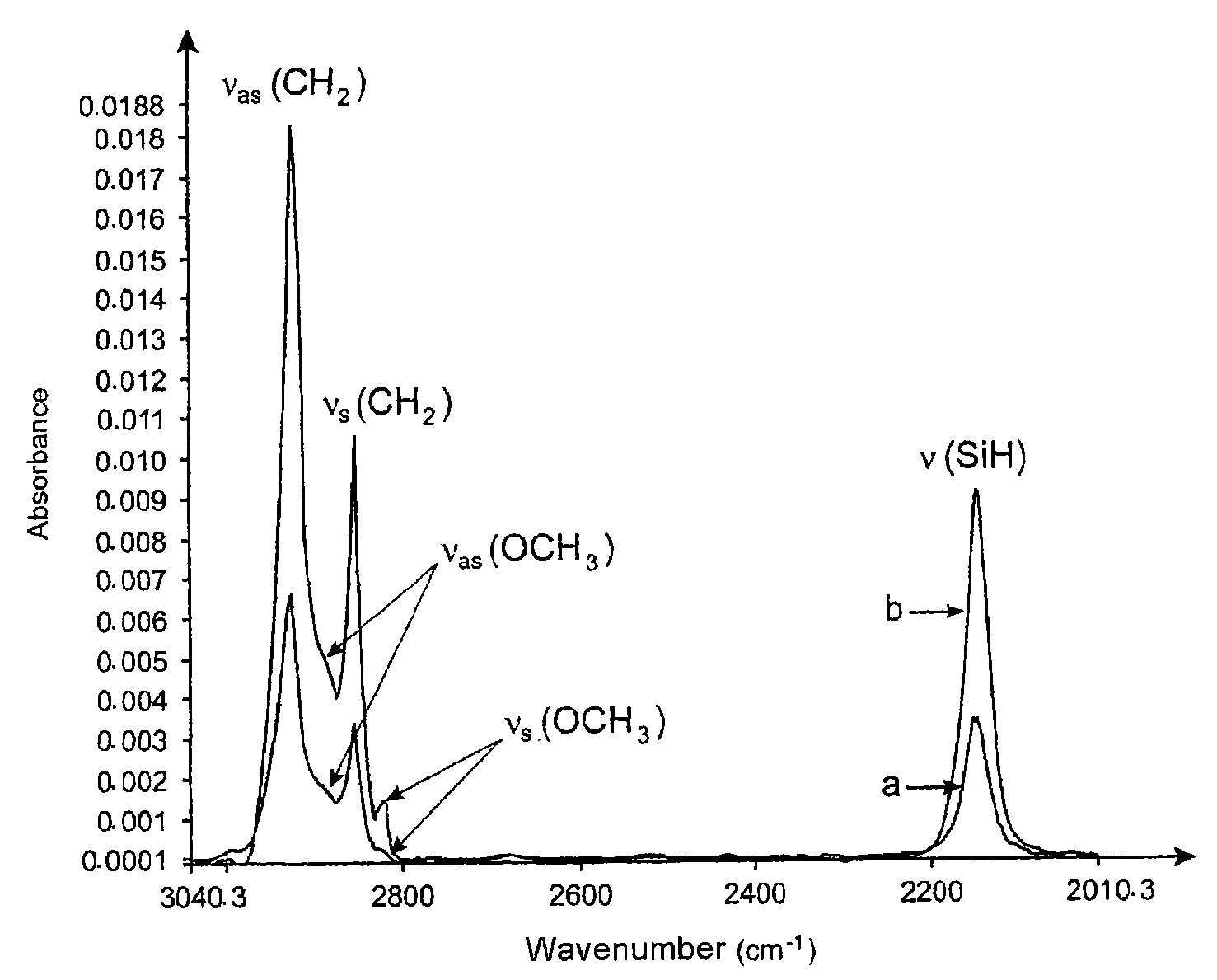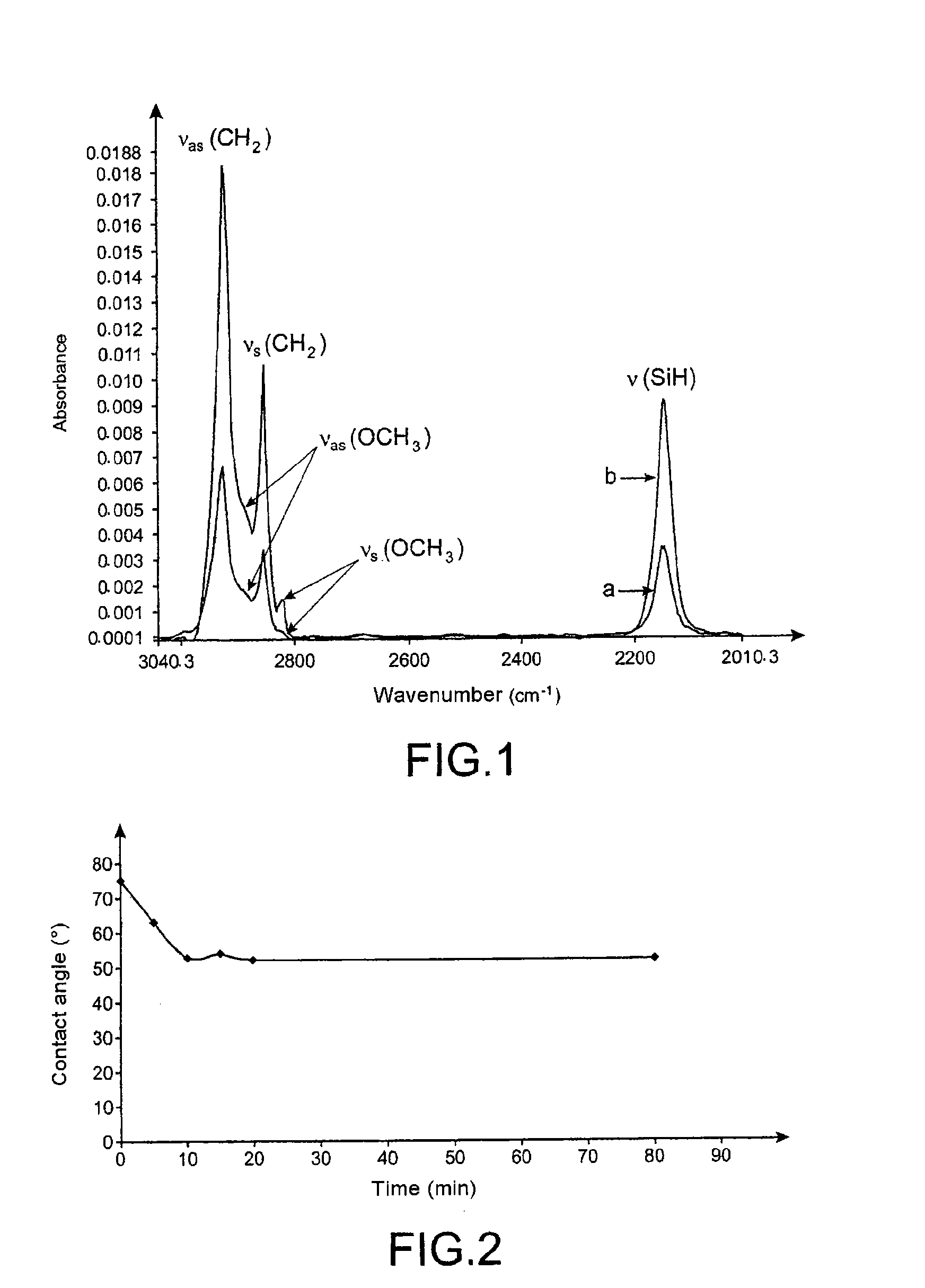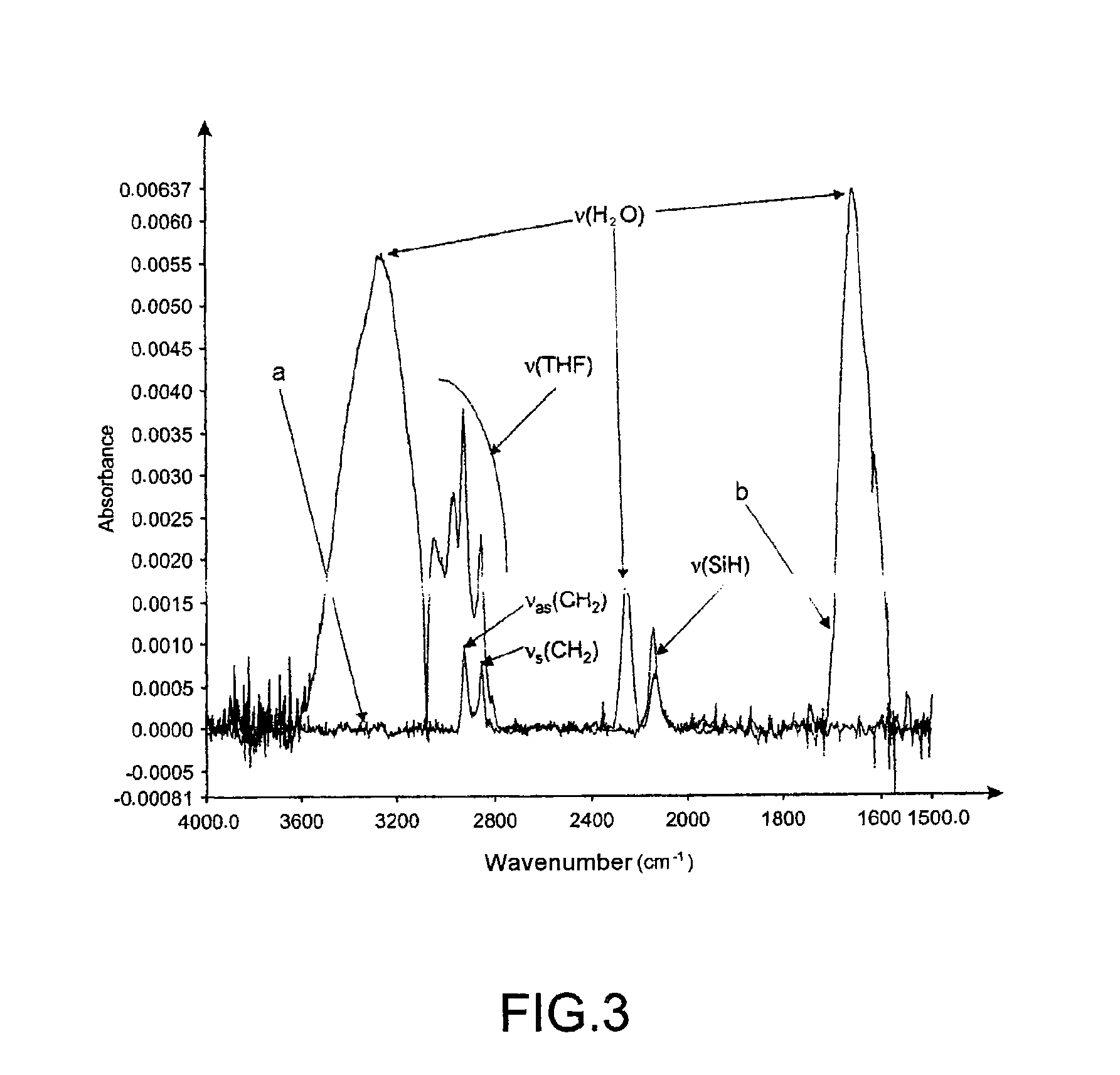Novel Silane Compounds and Their Use in Functionalizing Solid Supports and Immobilizing Biological Molecules on These Supports
- Summary
- Abstract
- Description
- Claims
- Application Information
AI Technical Summary
Benefits of technology
Problems solved by technology
Method used
Image
Examples
example 1
[0124]This example illustrates the synthesis of a silane in accordance with the invention: 11-(methoxy-methoxy)undecylsilane according to the following reaction scheme:
[0125]The methoxymethyl ether functional group is synthesized by reaction of undecenol with dimethoxy-methane (reactant and solvent) in the presence of catalytic amounts of lithium bromide and of para-toluenesulphonic acid. The incorporation of the silylated group takes place via a hydrosilylation reaction in the presence of a Karstedt catalyst.
a) Stage 1: Synthesis of 11-(methoxymethoxy)undec-1-ene
[0126]
[0127]Lithium bromide (3.06 g, 35 mmol, 0.4 eq) and para-toluenesulphonic acid (1.67 g, 8.8 mmol, 0.1 eq) are added to a solution of undecenol (15 g, 17.65 ml, 88 mmol) dissolved in 225 ml of dimethoxymethane (12.9 g, 170 mmol, 28.3 eq). The reaction takes place at ambient temperature for 12 hours. After addition of 500 ml of ether, the reaction mixture is washed successively with deionized water (twice) and with a sa...
example 2
[0160]This example illustrates the silanization of a silicon support with the silane compound prepared in Example 1.
[0161]Beforehand, the silicon support, covered with a thermal oxide layer with a thickness of 5000 Å, is subjected to hydroxylation by bringing it into contact with a 3.5M sodium hydroxide solution for two hours.
[0162]A solution comprising the silane compound of Example 1 at a concentration of 10−2M in anhydrous trichloroethylene is used and the silanization reactions are carried out at a controlled temperature of 2° C. for 24 hours. The methoxymethoxy functional group is converted to an OH functional group during a post-silanization reaction of the modified support by bringing it into contact with a 12N hydrochloric acid solution, such as that illustrated in FIG. 1.
[0163]FIG. 1 represents the infrared spectrum of 11-(methoxymethoxy)undecylsilane in solution in trichloroethylene and the spectrum of the surface of the silicon support after silanization.
[0164]Other exper...
example 3
[0166]This example illustrates the deprotection of the —OH functional group of the grafted compound at the surface of the support, this deprotection reaction being monitored either by the study of the change in the contact angle or by Fourier transform IR-ATR (FTIR-ATR) spectroscopy.
[0167]a) Study of the Change in the Contact Angle
[0168]Monitoring by contact angle was carried out in order to demonstrate the speed and effectiveness of the deprotection treatment.
[0169]For this, the silicon support functionalized with the silane compound carrying a methoxymethoxy group at the chain end is immersed in a 12N HCl solution. After rinsing with deionized water and with pentane under ultrasound for four minutes, the contact angle is measured.
[0170]FIG. 2 illustrates the change in the contact angle as a function of the contact time of the support with the HCl solution.
[0171]The following results are presented in the table below.
Contact time (min)Contact angle (°)075.15631052.91554.12052.28052....
PUM
| Property | Measurement | Unit |
|---|---|---|
| Length | aaaaa | aaaaa |
| Length | aaaaa | aaaaa |
| Length | aaaaa | aaaaa |
Abstract
Description
Claims
Application Information
 Login to View More
Login to View More - R&D
- Intellectual Property
- Life Sciences
- Materials
- Tech Scout
- Unparalleled Data Quality
- Higher Quality Content
- 60% Fewer Hallucinations
Browse by: Latest US Patents, China's latest patents, Technical Efficacy Thesaurus, Application Domain, Technology Topic, Popular Technical Reports.
© 2025 PatSnap. All rights reserved.Legal|Privacy policy|Modern Slavery Act Transparency Statement|Sitemap|About US| Contact US: help@patsnap.com



